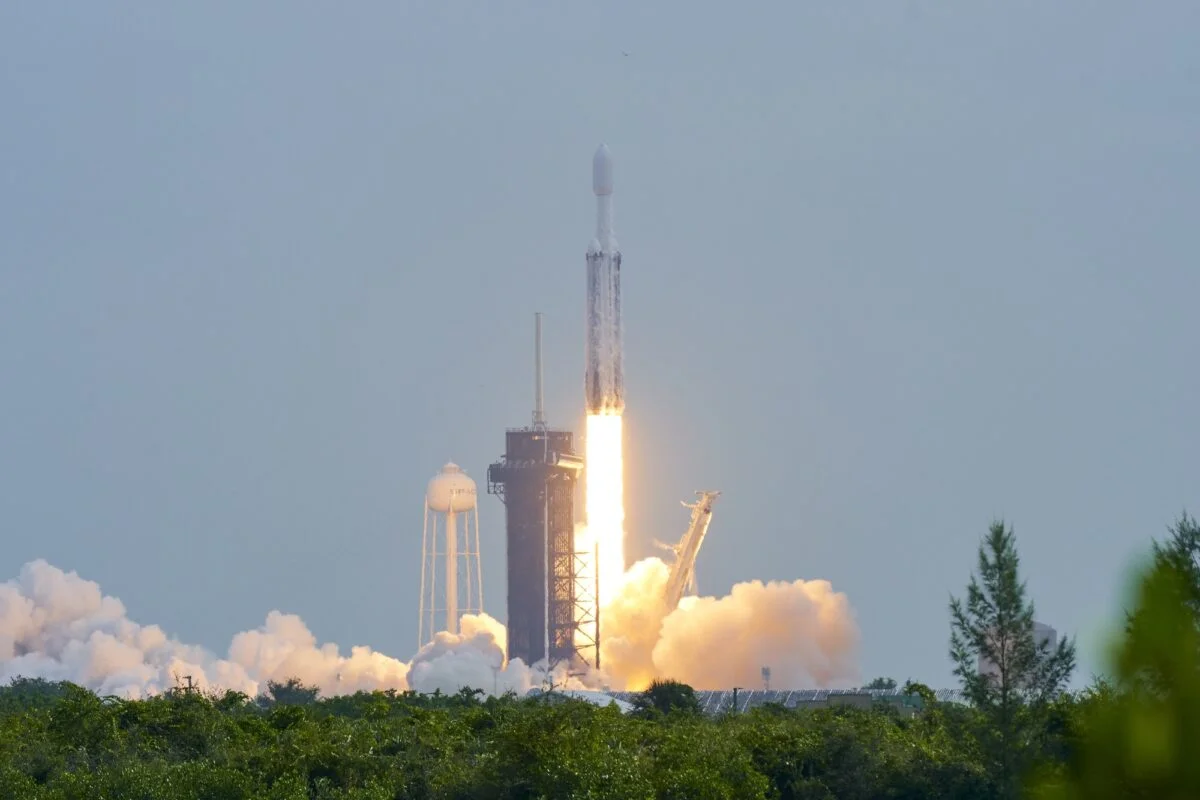NASA launches Psyche mission to metal world
- October 13, 2023
- 0
A NASA spacecraft is finally on its way to the metallic main belt asteroid after successfully launching the Falcon Heavy on October 13. A SpaceX Falcon Heavy rocket
A NASA spacecraft is finally on its way to the metallic main belt asteroid after successfully launching the Falcon Heavy on October 13. A SpaceX Falcon Heavy rocket

A NASA spacecraft is finally on its way to the metallic main belt asteroid after successfully launching the Falcon Heavy on October 13. A SpaceX Falcon Heavy rocket took off from Kennedy Space Center in Florida at 10:19 am. NASA’s Psyche spacecraft with its payload separated from the upper unit 62 minutes after liftoff. The launch was the eighth for the Falcon Heavy, but the first with this rocket for NASA.
Psyche is a Discovery-class planetary science mission targeting an object in the main asteroid belt, also known as Psyche. This asteroid consists mainly of metal and may be the core of a larger object with its outer layers removed.
On the way to the asteroid, the Psyche spacecraft will perform a technology demonstration. The Deep Space Optical Communications payload on the spacecraft will test the ability of lasers to provide high-bandwidth communications at interplanetary distances.
The launch comes more than a week into the three-week launch period. In late September, NASA postponed the launch, previously scheduled for October 5, by a week after an inspection revealed problems with the operating temperature of the cold gas engines used to maneuver the spacecraft. Engineers had to revise the operating parameters of the engines to prevent overheating.
“Unless the parameters are changed, there is a risk of the engines overheating and damaging them,” Henry Stone, Psyche project manager at the Jet Propulsion Laboratory, said at the Oct. 11 briefing. “It was a serious problem that we had to deal with.”
He said the changes apply to a “selected subset of parameters” of the engines but did not elaborate on the changes. According to him, these changes will not affect the operation of Psyche after it hits the asteroid. “The changes have affected some of the timeline limits we already have, but once we get to the hull we’ll do the same.”
NASA postponed the launch to October 12 but postponed it to another day due to bad weather conditions. The launch period lasted until October 25, with instant launch windows each day.
Psyche was originally planned to be released in August 2022. But delays in flight software testing have forced NASA to miss launch opportunities in August and October 2022. An independent review found that these delays in testing were symptomatic of broader institutional problems at JPL.
Although the problems with both Psyche and JPL have been fixed, they affected many NASA science missions. The 14-month launch delay delayed the spacecraft’s arrival at the asteroid from 2026 to August 2029. The cost of the mission also increased by 20%, from $1 billion to $1.2 billion.
Psyche’s delay also affected Janus, a mission of a small asteroid satellite that was expected to fly as a booster payload during launch. The delay meant that Janus was unable to complete its original mission of passing two pairs of binary asteroids and was unable to find suitable alternative targets with the mission’s revised orbit. In July, NASA announced that it would cancel Janus and put the finished spacecraft into storage.
Institutional problems at JPL revealed by an independent review of Psyche’s delays forced NASA to delay the next Discovery-class mission under development at JPL, Venus Emissivity, Radio science, InSAR, Topography and Spectroscopy, or VERITAS. This mission, which was selected in 2021 for launch in 2028, is now planned to launch before 2031.
Psyche’s delay and increased budget have added stress to NASA’s overall planetary science program, which is already grappling with issues such as returning samples from Mars. In the agency’s fiscal 2024 budget request, NASA said it was delaying the Geospace Dynamics Constellation heliophysics mission, citing “high budget requests” from other programs.
Scientists affiliated with NASA and Psyche said the mission was worth the wait and the extra cost. The spacecraft will spend 26 months orbiting Psyche in four different orbits, studying the Solar System’s largest body made mostly of metal.
“This will be our first visit to a world with a metallic surface,” Lindy Elkins-Tanton, Psyche’s principal investigator at Arizona State University, said at a pre-launch briefing.
Ben Weiss, Psyche’s deputy principal investigator at MIT, said the main goal of the mission is to determine Psyche’s origin. “We have two important ideas about how psyche is formed,” he said; either as the core of a planet that failed to become a planet, or as a primitive body enriched with metal for some reason.
“We will orbit Psyche and measure various properties of it at lower and lower altitudes,” he said. The spacecraft is equipped with a camera, a gamma and neutron spectrometer and a magnetometer.
“This is the first discovery of a new kind of world,” Elkins-Tanton said. “There aren’t that many undiscovered types of worlds to see in our solar system, so that’s what’s so exciting about it.”
Source: Port Altele
As an experienced journalist and author, Mary has been reporting on the latest news and trends for over 5 years. With a passion for uncovering the stories behind the headlines, Mary has earned a reputation as a trusted voice in the world of journalism. Her writing style is insightful, engaging and thought-provoking, as she takes a deep dive into the most pressing issues of our time.